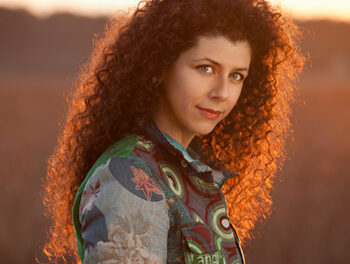The UNC Symphony Orchestra under the guidance of Tonu Kalam has earned a reputation as one of the most outstanding Collegiate Orchestras in the USA. In 2012 they were named first-place winner of The American Prize in Orchestral Performance, College/University Division, for their performance of Rachmaninoff’s Symphonic Dances, available for viewing and listening on YouTube.* The orchestra, made up of music majors, minors, non-majors, graduate students, and community members, performs two major concerts each semester, consisting of orchestral masterworks from Mozart to the latest contemporary composers.
For this UNC-CH Department of Music Scholarship Benefit Concert, the featured soloist was Clara Yang. With credentials from Eastman School of Music, Yale School of Music, and University of Southern California, she has been assistant professor of piano at UNC-CH since 2011. She has performed widely in Europe, Australia and the United States and has been heard with the North Carolina Symphony under both William Henry Curry and Grant Llewellyn.
We heard her perform, with consummate technical skill and polished musicality, Rachmaninoff’s Rhapsody on a Theme of Paganini, Op. 43. The rhapsody, composed in 1934, is a set of 24 variations based on the 24th and last caprice of the famous violinist Niccolò Paganini. It resembles a piano concerto in its scope and, though it is played straight through without a break, it could actually be divided into three movements: I. Variations 1-10, II. Variations 11-18, and III. Variations 19-24.
All of Rachmaninoff’s major works for piano and orchestra are laid out in a scheme involving collaboration: the piano and the orchestra carry on a conversation and a joint task, always moving the music forward in its purpose. The orchestra played with precision and outstanding musical feeling.
Yang’s technical skill and artistic sensibility were apparent throughout this performance. At times her fingers moved as fast as seemed humanly possible. Her powerful expression of the Dies Irae plainchant quoted in variation 7 was spine-chilling while the orchestra accompanied with a slower version of the opening motif of the Paganini theme. The mystical quality of variation 17 was enhanced by Yang’s delicate and sensitive touch. The glorious sweeping melody of the 18th variation, had it been an aria in an opera, would have been a show-stopper. Both orchestra and soloist put their all into this extravagant moment which is a peak of romanticism. The closing variations were a blazing and brilliant comet for both orchestra and soloist.
The remainder of the concert was allotted to the First Symphony of the bard of Finnish fields and forests, Jean Sibelius.
It is the view of some that Sibelius (baptized Johan Julius Christian) was the greatest symphonist since Beethoven. He was championed by Stokowski and Ormandy. Others, including Theodor Adorno and Virgil Thomson were critical. On the other hand, Ralph Vaughan Williams and Arnold Bax both dedicated their Fifth Symphonies to Sibelius, and he was highly influential on other British composers.
While “Finlandia” and “Valse Triste” are his most popular works, his major contributions to the world of music are his seven symphonies. It was highly rumored that he was at work on an eighth symphony. However, his wife Aino reported that in 1945 in a fit of self-criticism and despair he burned a large basket of manuscripts, remarking to close friends that if he could not write a better symphony than his Seventh, then it would be his last. Thus, for the last 30 years of his life he produced no major works and only a few lighter pieces.
His symphonies vary in quality and depth to be sure, but most of them seem to follow a developmental style that might be compared to gardening. A seed is planted, it is watered, fertilized, grows, is pruned, develops, and flowers with the logical fruit of the seed. This form of development reached its most profound expression in the Seventh Symphony, but it is also in the First Symphony. The first movement opens with a haunting clarinet solo over quietly shimmering strings. The theme is watered and fertilized with strings and nervous woodwind passages; branches out with sweet flowerets in the strings, and finally sings in the full orchestra before dying away to make room for the second movement.
The second movement is a wistfully beautiful adagio, building to a climax in the middle before fading away with the original theme. The third movement swings into action with tympani and woodwinds and the fourth movement builds to a triumphal conclusion recalling material from the previous movements.
The tone was set by principal clarinetist James Moon’s fine rendition of the opening solo. From there on it was a ride through the Finnish countryside, filled with a rich variety of colors, bright skies, dark shadows, and emotional depth that was rapturous and satisfying. Kalam led his band with firm control through thrilling climaxes and meditative passages. .The core of the UNC Symphony Orchestra is an impressive array of strings: 68 were listed in the program. What warm and lush sound they make! The second movement absolutely soared. The brasses were dead on throughout the piece; the woodwinds dominated in some spritely dancing passages. Two harps added their magic, and a handful of percussionists – especially the almost omnipresent timpanist – were outstanding.
The young Sibelius, trying his symphonic wings in the first of his seven symphonies, was nicely realized in this fine performance. The majestic trees, the mystical cranes, the swirling winds, the silvery moon appearing through dissolving clouds – all were here, that is, if we allowed our imagination to be stirred by the music.
*The Rachmanonoff is in three parts:
https://www.youtube.com/watch?v=cWBrBRWl1fY
https://www.youtube.com/watch?v=lIp5x5NIaME
&
https://www.youtube.com/watch?v=c8ICrl3Ny6s











